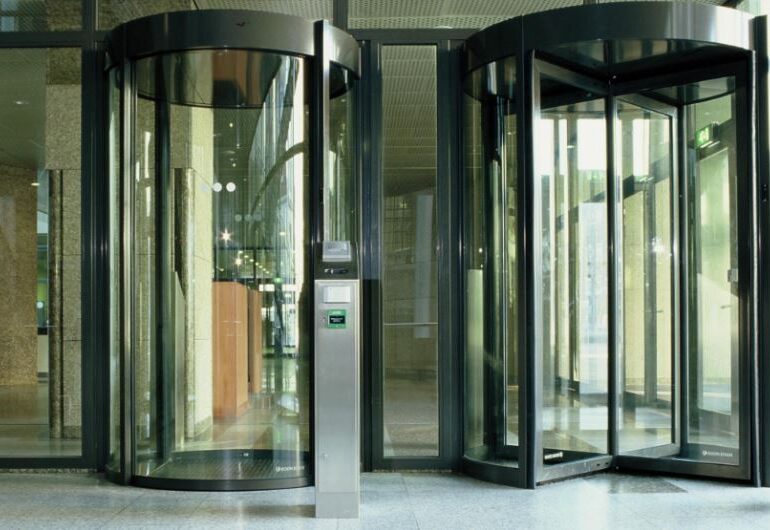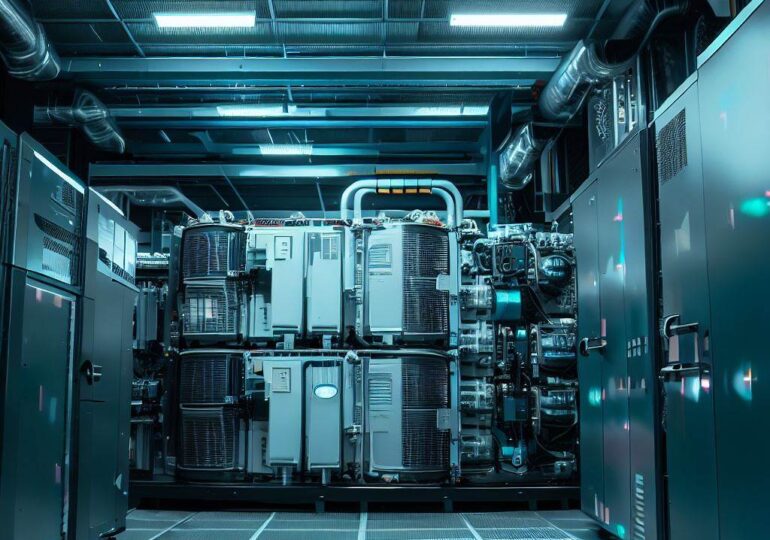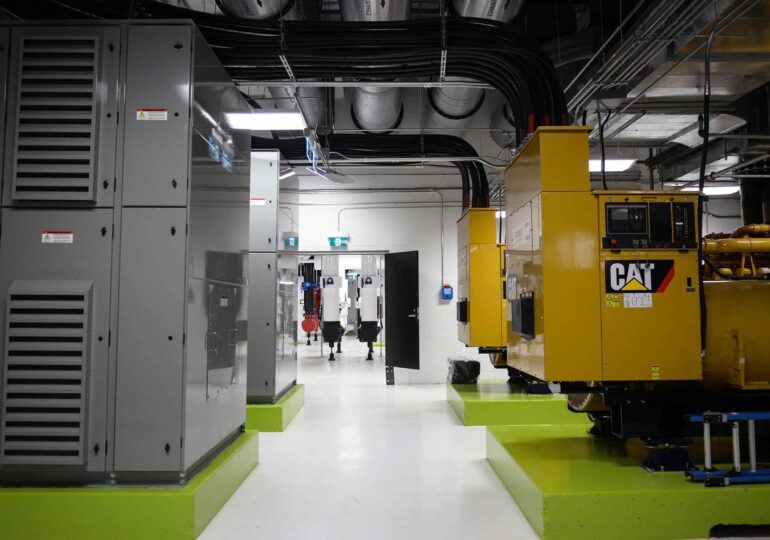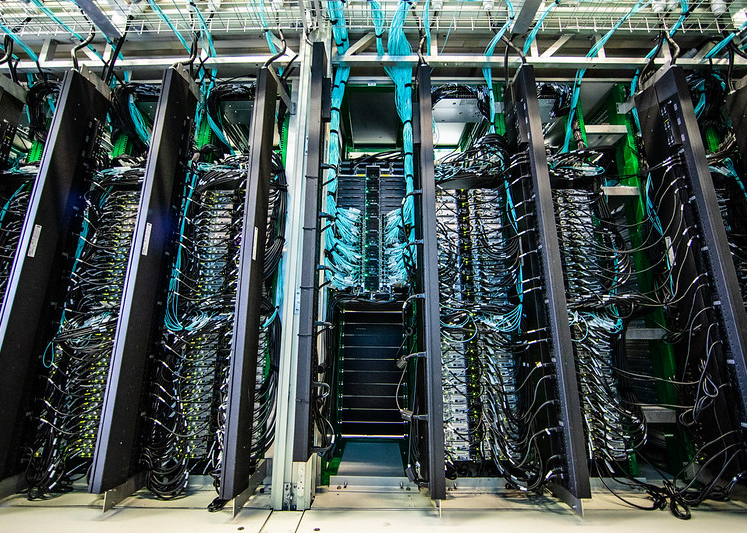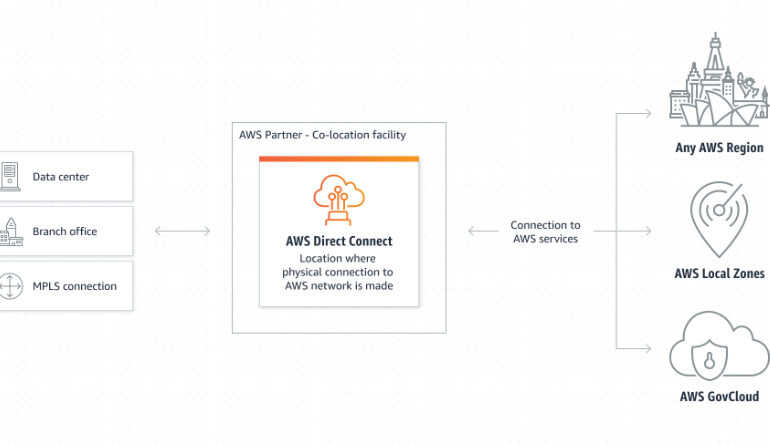Is Resilience in the design of UPS and Generators important for Data Centres?
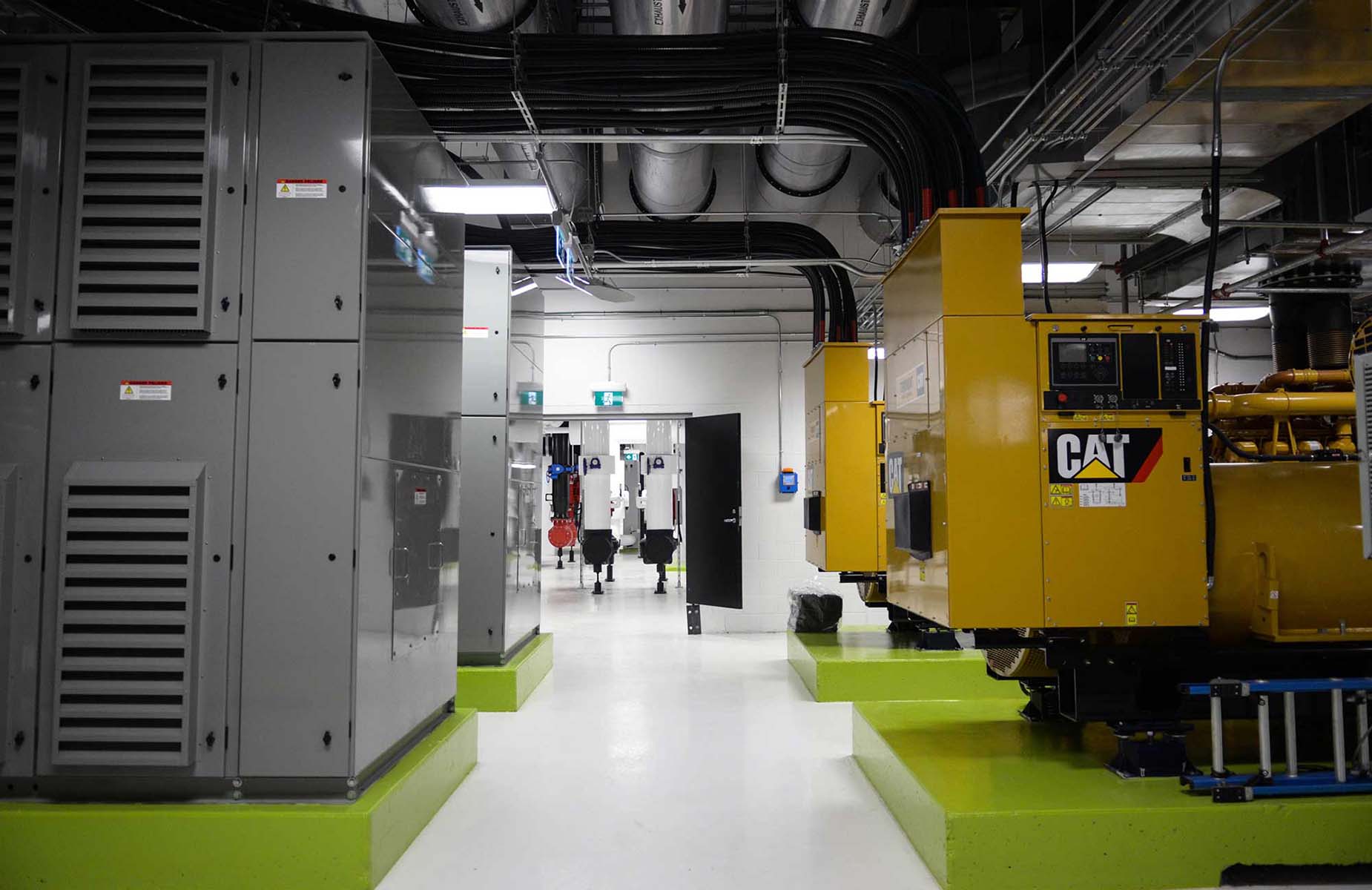
In the fast-paced world of data centres, where uninterrupted power supply is critical, resilience in the design of UPS (Uninterruptible Power Supply) and generators becomes paramount. These backup power systems play a vital role in ensuring the continuous operation and protection of sensitive equipment, ensuring smooth business operations even during power outages.
To guarantee uninterrupted power supply, data centres need resilient UPS and generator systems. Resilience, in this context, refers to the ability of these systems to withstand and quickly recover from unexpected outages or failures. This requires robust design features, redundant components, and efficient fault detection and recovery mechanisms.
Incorporating resilience into the design of UPS and generators provides several benefits for data centres. Firstly, it minimizes the risk of downtime, saving businesses significant financial losses and reputational damage. Additionally, it safeguards crucial data and prevents potential security breaches. Furthermore, it enhances the overall operational efficiency of data centres by reducing maintenance requirements and ensuring reliable power delivery.
In this article we will delve into some of the key areas:
- The Importance of Resilience in data centres
- Understanding UPS (Uninterruptible Power Supply) systems
- Role of UPS systems in data centre systems
- Key features to look for in UPS systems for data centres
- Importance of generators in data centre resilience
- Factors to consider when choosing generators for data centres
- Best practices for designing resilient UPS and generator systems
- Case studies of data centre failures and the role of resilience
- Industry standards and regulations for data centre resilience
The importance of resilience in Data Centres
Data centres are the backbone of modern businesses, housing critical infrastructure and sensitive data. These facilities operate around the clock, serving a wide range of industries, including finance, healthcare, e-commerce, and telecommunications. Any power disruption or downtime can have severe consequences, resulting in financial losses, customer dissatisfaction, and even regulatory non-compliance.
Resilience in the design of UPS and generators is crucial to mitigate these risks and ensure uninterrupted power supply. By incorporating resilient power backup systems, data centres can withstand and recover from unexpected outages, ensuring uninterrupted operations and protecting sensitive equipment.
Understanding UPS (Uninterruptible Power Supply) systems
UPS systems are a critical component of data centre power infrastructure. They act as a bridge between the main power supply and the critical load, providing backup power during outages or voltage fluctuations. UPS systems consist of three main components: the rectifier, battery, and inverter.
The rectifier converts alternating current (AC) power from the utility grid into direct current (DC) power, which charges the battery. The battery stores this DC power and serves as a backup power source during outages. The inverter then converts the DC power back into AC power, ensuring a seamless transition from the utility grid to battery power.
Role of UPS systems in data centre resilience
UPS systems play a crucial role in data centre resilience by providing backup power during outages and voltage fluctuations. These systems ensure uninterrupted power supply to critical equipment, such as servers, storage devices, networking equipment, and cooling systems, preventing data loss and equipment damage.
In addition to providing backup power, UPS systems also offer protection against power quality issues, such as voltage sags, surges, and frequency variations. They act as a buffer between the utility grid and the critical load, filtering out power anomalies and delivering clean and stable power to the data centre infrastructure.
Key features to look for in UPS systems for data centres
When selecting UPS systems for data centres, several key features should be considered to ensure resilience and reliability. These features include:
1. Scalability and modularity
Data centres are constantly evolving and expanding to meet growing demands. UPS systems should be scalable and modular, allowing for easy capacity upgrades without disrupting operations. This flexibility ensures that data centres can adapt to changing power requirements and accommodate future growth.
2. Redundancy and fault tolerance
To enhance resilience, UPS systems should incorporate redundancy at various levels. This includes redundant power modules, batteries, and control systems. Redundancy ensures that a single point of failure does not disrupt the entire system, allowing for seamless power transfer during failures or maintenance activities.
3. Efficient fault detection and recovery mechanisms
UPS systems should have advanced fault detection mechanisms to identify potential issues before they escalate into critical failures. Real-time monitoring, predictive analytics, and remote management capabilities can help data centre operators proactively identify and resolve problems, minimizing downtime and maximizing system reliability.
4. Energy efficiency
Data centres consume significant amounts of energy, and UPS systems contribute to this energy footprint. Energy-efficient UPS systems can help reduce operating costs and minimize environmental impact. Features such as high-efficiency modes, variable speed fans, and intelligent load management can optimize power consumption without sacrificing performance.
5. Compatibility with renewable energy sources
With the growing focus on sustainability, data centres are increasingly adopting renewable energy sources, such as solar and wind power. UPS systems that are compatible with renewable energy sources can help data centres reduce their carbon footprint and achieve their sustainability goals.
Importance of generators in data centre resilience
While UPS systems provide short-term backup power, generators are responsible for long-term power supply during extended outages or fuel shortages. Generators are typically powered by diesel or natural gas and can provide continuous power for extended periods.
Generators play a crucial role in data centre resilience by acting as a secondary power source when the UPS systems’ battery backup is depleted. They ensure uninterrupted power supply until utility power is restored or additional fuel is added to the generator.
Factors to consider when choosing generators for data centres
Selecting the right generator for a data centre requires careful consideration of several factors to ensure resilience and reliability. These factors include:
1. Power capacity
Generators should have sufficient power capacity to meet the data centre’s load requirements. This includes considering both the current power demands and future growth projections. Oversizing or undersizing the generator can lead to inefficiencies or power supply limitations.
2. Fuel type and storage
Data centres should carefully evaluate the fuel type for their generators based on factors such as availability, cost, and environmental impact. Additionally, adequate fuel storage capacity should be considered to ensure extended runtime during prolonged outages or fuel shortages.
3. Redundancy and fault tolerance
Similar to UPS systems, generators should incorporate redundancy features to ensure continuous power supply. This can include parallel operation with multiple generators, redundant fuel supply systems, and automatic transfer switches for seamless power transfer.
4. Maintenance and serviceability
Generators require regular maintenance and servicing to ensure optimal performance. Data centres should consider factors such as ease of access for maintenance, availability of spare parts, and the reputation of the generator manufacturer for prompt and reliable service support.
5. Noise and emissions control
Generators can generate noise and emissions that may need to comply with local regulations or data centre design requirements. Noise attenuation measures, exhaust emission control systems, and proper ventilation should be considered to minimize the impact on the data centre environment.
Best practices for designing resilient UPS and generator systems
Designing resilient UPS and generator systems requires a holistic approach that considers various aspects of data centre operations. Some best practices for designing resilient power backup systems include:
1. Conducting a thorough risk assessment
Data centre operators should conduct a comprehensive risk assessment to identify potential vulnerabilities and power-related risks. This assessment should consider factors such as load requirements, environmental conditions, power quality issues, and potential failure points.
2. Implementing redundancy at various levels
Redundancy is key to resilience. Data centres should incorporate redundancy at various levels, including UPS systems, generators, power distribution units, and cooling systems. This ensures that a single point of failure does not compromise the entire power infrastructure.
3. Regular testing and maintenance
Regular testing and maintenance are essential to ensure the reliability and performance of UPS and generator systems. Data centre operators should establish a comprehensive testing and maintenance schedule, including load testing, battery health checks, and generator load bank tests.
4. Monitoring and remote management
Real-time monitoring and remote management capabilities enable proactive fault detection and faster response times. Data centres should invest in monitoring systems that provide insights into the performance, health, and efficiency of UPS and generator systems.
5. Staff training and emergency preparedness
Data centre staff should receive proper training on UPS and generator systems’ operation, maintenance, and emergency procedures. This ensures that they can respond effectively to power-related incidents and minimize downtime.
Case studies of data centre failures and the role of resilience
Several notable data centre failures have highlighted the importance of resilience in UPS and generator systems. These case studies demonstrate the impact of power disruptions and the role of resilient backup systems in mitigating risks.
1. Interxion data centre outage in 2022
In January 2022, a power outage at the Interxion data centre caused major disruption for its colocation and network service customers with apparently the whole of their first floor without power. There were failures to multiple power feeds into the facility which is also a site for LINX (London Internet Exchange).
2. Texas data centre outages in 2021
In March 2021 sub-zero temperatures caught the state of Texas’s utility companies by surprise. Shortages of natural gas that provide more than half the state’s power generation combined with frozen wind turbines and snow-covered solar panels, which ceased power generation, caused a major state problem. With a looming power shortfall imminent, the ERCT (Electric Reliability Council) of Texas called for power companies to conduct a series of controlled outages anddeclared a state-wide emergency.
The main Tier 1 data centers stayed online because their generators started up and supported the power load whereas the smaller tier-two and tier-three data centers didn’t.
3. Amazon Web Services (AWS) outage in 2017
In February 2017, an AWS outage caused by a human error in the configuration of a command led to significant service disruptions for several high-profile websites and applications. The incident highlighted the importance of redundancy and fault tolerance in UPS and generator systems to prevent widespread disruptions.
4. Delta Airlines data centre outage in 2016
In August 2016, a power failure at a Delta Airlines data centre disrupted the airline’s operations, leading to flight cancellations and delays. The incident underscored the critical role of resilient power backup systems in the aviation industry, where downtime can have severe consequences.
5. British Airways data centre failure in 2017
In May 2017, a power surge at a British Airways data centre caused a major IT systems failure, resulting in flight cancellations and delays for thousands of passengers. The incident highlighted the importance of regular testing, maintenance, and staff training to ensure the resilience of UPS and generator systems.
Industry standards and regulations for data centre resilience
The importance of data centre resilience has led to the development of industry standards and regulations. These standards provide guidelines and best practices for designing, operating, and maintaining resilient power backup systems.
1. Uptime Institute’s Tier Standard
The Uptime Institute’s Tier Standard is a globally recognized benchmark for data centre resilience. It classifies data centres into four tiers based on their ability to withstand disruptions and maintain uptime. Tier III and Tier IV data centres have stringent requirements for redundancy, fault tolerance, and concurrent maintainability.
2. International Electrotechnical Commission (IEC) standards
The International Electrotechnical Commission (IEC) has developed several standards related to data centre resilience, including IEC 62443 for industrial automation and control systems security and IEC 61508 for functional safety of electrical, electronic, and programmable electronic safety-related systems.
3. National Fire Protection Association (NFPA) standards
The National Fire Protection Association (NFPA) has developed several standards related to data centre resilience, including NFPA 70 (National Electrical Code) and NFPA 110 (Standard for Emergency and Standby Power Systems). These standards provide guidelines for electrical safety, emergency power supply, and generator installation.
Conclusion: Investing in resilient UPS and generator systems for data centres
In conclusion, resilience in the design of UPS and generators is crucial for data centres, ensuring uninterrupted power supply, protecting sensitive equipment, and maintaining smooth business operations. Data centre operators must prioritize the implementation of resilient power backup systems to mitigate downtime risks and bolster their operational capabilities.
By considering key features in UPS systems, such as scalability, redundancy, fault tolerance, and energy efficiency, data centres can enhance their resilience and minimize the impact of power disruptions. Likewise, selecting the right generators based on factors such as power capacity, fuel type, and maintenance requirements is essential for long-term power supply during extended outages.
Implementing best practices, conducting regular testing and maintenance, and adhering to industry standards and regulations further strengthen data centre resilience. With robust UPS and generator systems in place, data centres can ensure uninterrupted operations, protect critical infrastructure and data, and safeguard their reputation in the fast-paced world of technology.

